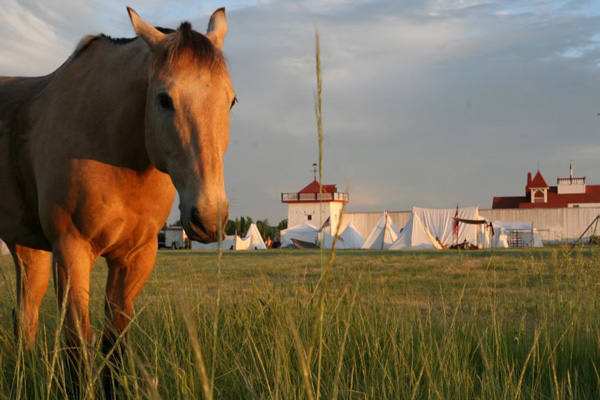Fort Union was an international trade hub between Euro-Americans, Assiniboine Indians, and over eight other Northern Plains Tribes. During its prime, well over 25,000 bison robes and 150,000 beaver pelts were traded here annually. But it wasn't just the fur trade that made this place so special; it was the cross-cultural exchange and peaceful coexistence between traders and the many different Native American tribes that walked on the ground of the fort.
The list of famous people who visited Fort Union is extensive. One notable person was George Catlin, a painter who painted portraits of the native people that visited the fort. Another was an explorer by the name of Prince Alexander Philipp Maximilian. Karl Bodmer, another artist, also visited the fort. Naturalists, such as James Audubon, visited and noted the various species of wildlife that inhabited the Upper Missouri. The list of notable mountain men is also extensive, with names like Jim Bridger, James Beckwourth, and Hugh Glass known to have visited Fort Union.

The fort symbolized peaceful coexistence between Euro-, Assiniboine Indians, and over eight other Northern Plains Tribes until the Dakota Wars broke out in 1862. The fort remained open for a few years but had trouble with some Native American tribes. The US Army came to the fort in 1864 and spent one year there guarding supplies for the various military expeditions that were taking place in the region.
Although the Army occupied the fort, the American Fur Company still owned it. However, in 1867, the fort's doors were closed for good, and the US Army took the lumber from the fort and moved it downriver about 2 miles to build Fort Buford.
Today, the Fort Union Trading Post National Historic Site is a living museum that tells the story of the fur trade and the peaceful coexistence between Euro-Americans, Assiniboine Indians, and over eight other Northern Plains Tribes. that occurred at this location. Visitors can walk the grounds, tour the reconstructed fort, and see exhibits that highlight the importance of this site in American history.
The significance of this site cannot be understated, and its legacy lives on today through the Fort Union Trading Post National Historic Site.


